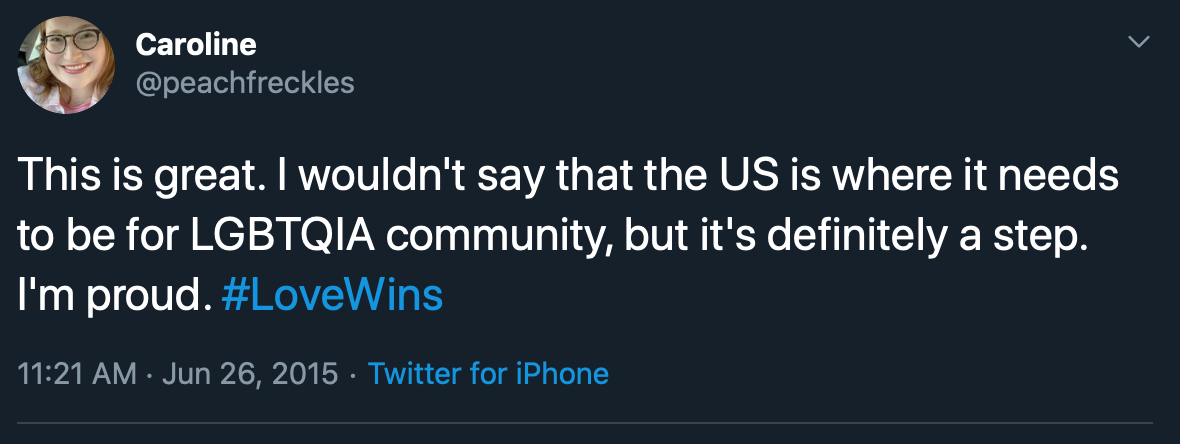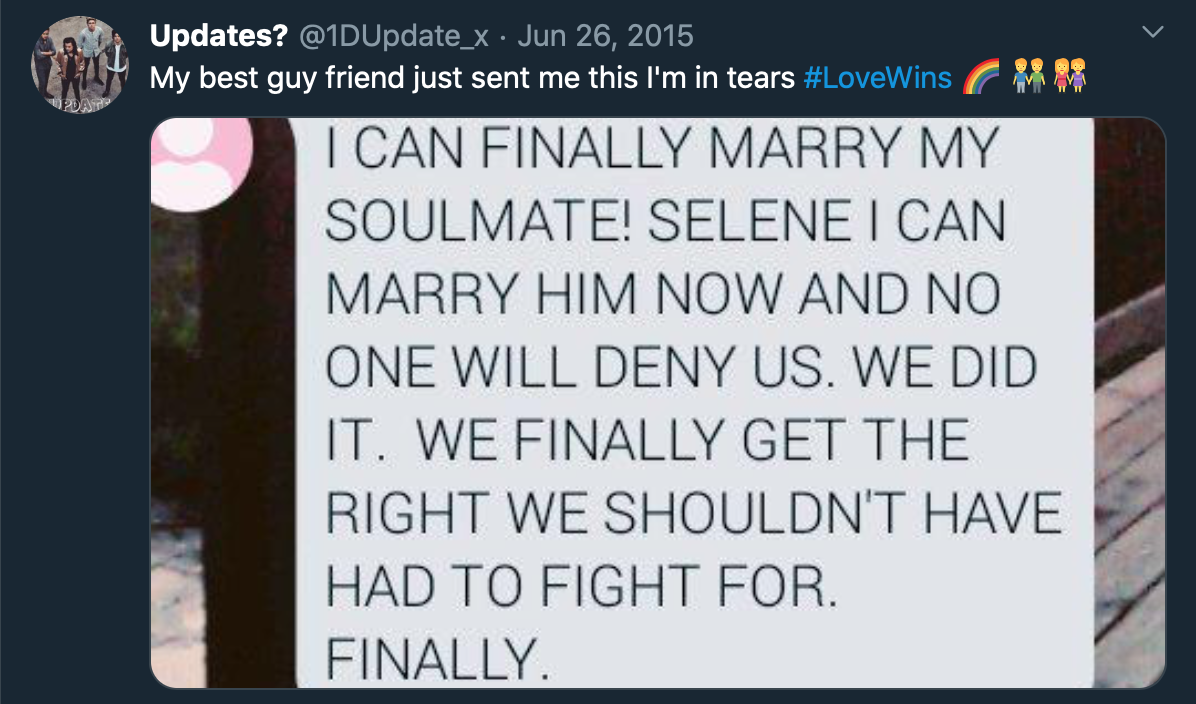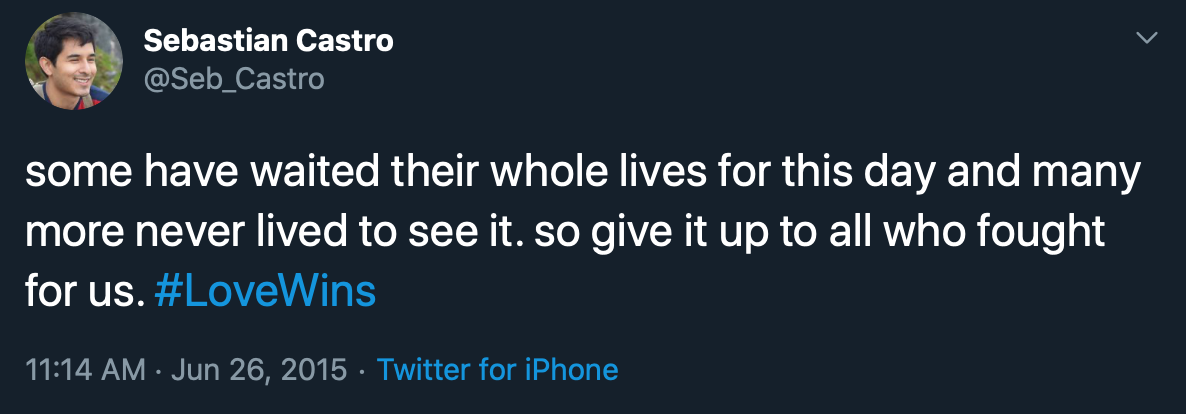Dating Evolution and Revolution
I have been in a relationship since my sophomore year of high school—nearly six years to be exact. Many people have told me that my situation is an anomaly and that in our generation, it isn’t something that happens often. Simply put, I am lucky. People say dating in our generation is horrible. That online dating is a nightmare. Relationships are too confusing. Or they just do not prioritize finding love. Looking back at our grandparents’ generation, people aspired to marry and typically stayed together no matter what. This changed with our parents’ generation when divorce became more common; women were aspiring to be more than a wife. Millennials and Generation Z, however, have completely changed the dating and relationship game.
Overall, everyone can agree that society’s views on dating and relationships have changed. So, I decided to figure out what factors play a role in the ever-changing idea of love. Through personal experience, research, and interviews, I discovered five important factors as to why dating and relationships have changed across generations.
Religion
The baby boomer generation expands across the years 1946 to 1964. Many baby boomers grew up with a strong religious faith. By the ‘60s, Catholicism and Christianity were the top two faiths amongst Americans. According to a Pew Research Center study, 69% of baby boomers are absolutely certain in their belief in God and 59% say religion is very important in their life.
Religion, of course, played an important role in the decisions baby boomers made about marriage. One couple I spoke with, Mary and Brian McLaughlin, were born in 1960. They have known each other since the first grade and grew up with a strict religious upbringing. According to Mary, they “lived and breathed church.” When they decided to get married in the ‘80s, they knew they were making a commitment for the rest of their lives. Growing up in a traditional household, they knew divorce wasn’t an option. “We never went into the mindset that if it didn’t work out, we have to get divorced,” Mary stated. The couple has now been together for 37 years with two kids. While they have tried to instill the same faith in their kids, they did not hesitate to point out that society has moved away from God.
Studies from the Pew Research Center show that 36% of millennials are unaffiliated and 23% believe nothing in particular. Furthermore, 38% only attend a religious service a few times a year, while 34% say they never attend a religious service. Combined, this is twice as more than the 28% that says they attend a religious service at least once a week.
With religion out of the picture, the values and beliefs on relationships have shifted. In the ‘50s and ‘60s, people dated to get married at a young age. Now, people date to simply… date. It allows people to explore emotions, love, life, and sex without any serious commitment.
Family Dynamics
Religion was already shifting towards the end of the baby boomer generation. According to a dissertation by Jessica Chase on religious beliefs within the baby boomer generation, baby boomers weren’t as interested in faith; instead, they were focusing on the idea of “enlightenment.” This caused divorce to become normalized as the decades went on and society further changed.
Ben Steverman, a writer at Bloomberg, stated in a 2018 article, “Boomers have continued to divorce at unusually high rates, all the way into their sixties and seventies. From 1990 to 2015, according to Bowling Green’s National Center for Family and Marriage Research, the divorce rate doubled for people aged 55 to 64, and even tripled for Americans 65 and older.”
Generation X—those born after 1961 up until the late ‘70s to early ‘80s—and millennials are now seeing a shift in their family dynamic. They grew up seeing their parents marry young, divorce, get remarried, or even stay single for the rest of their life.
Well, millennials are officially changing this. With the divorce rate consistently on a decline, studies show that younger couples (millennial/Generation Z) are approaching relationships very differently. Instead of marrying young, we are essentially being pickier. We are waiting until we have an education, a secure job, and are financially stable to make a commitment to someone else.
Source: Bloomberg
Women Empowerment
Women's Strike for Peace and Equality, New York City, Aug. 26, 1970; Source: Eugene Gordon—The New York Historical Society/Getty Images
During the 1960s and 1970s, the Women’s Rights Movement was at its peak. Women were demanding equal rights, opportunities, and personal freedoms. Known as the second-wave of feminism, they touched on politics, work, family, and sexuality.
This is when the shift of a woman’s role in society began. More women started to enter the workforce. This allowed women to become the breadwinners in their family. More women also started to get an education. Overall, it allowed women to be more independent. As the decades went on, women’s activism remained prominent even in today’s age.
The importance of women empowerment has significantly affected the way women date. They now can take on the role of what people saw as the “man’s job.” For starters, women now actively initiate romance with men. Furthermore, women show more dominant sexual behavior. They are often openly willing to talk about and partake in sexual activities for their pleasure. You see this in many aspects of our culture today such as OnlyFans, femdom communities, and the active fight to protect sex workers.
Lastly, we are now having more open conversations about consent. The #MeToo movement was founded in 2006 by Tarana Burke. According to the Me Too Movement website, this movement was founded to “help survivors of sexual violence, particularly Black women and girls, and other young women of color from low wealth communities, find pathways to healing.”
This movement and the talk of sexual violence against women became a national discussion in 2017 when many celebrities started to discuss the assault they faced from men within the industry. In turn, this started an open conversation about consent—on every level.
Heima Sritharan, a program coordinator at Mount Sinai Adolescent Center focusing on speaking with youth about healthy sex and relationship practices, is one person I interviewed on how dating has shifted in the past five to 10 years. Sritharan believes that there have been many significant shifts, but all in the right direction. Furthermore, Sritharan does many workshops on consent with adults, young adults, and adolescents. They found that more adults are wishing that they had this conversation earlier. Sritharan believes older folks have to realize society is changing for the better, and admitting the flaws of the past is one thing society has to acknowledge in order to keep moving forward.
LGBTQIA+ Awareness
LGBTQIA+ Awareness is essential in understanding the development of dating and relationship culture. On June 28, 1969, police raided the Stonewall Inn: a gay bar in New York City. Known as the “Stonewall Riots,” it was a violent protest that led to a riot for several days and is said to be the start of the LGBTQ civil rights movement. The first gay pride parade was held a year later in NYC.
It has been 50 years since the start of the LGBTQ civil rights movement. However, it wasn’t until 2015 that the U.S. Supreme Court legalized same-sex marriage across all 50 states. This sparked the hashtag #LoveWins. On every social media platform, people were using the hashtag to support the victory of the LGBTQ community. But, most importantly, people of this community expressed their gratitude to finally be able to openly marry the person they love. It was a reassurance that no matter who you love, love is love.




Beyond marriage, the dating world for members of the LGBTQIA+ has been completely transformed by a wave of dating apps. Apps such as Grindr, Jack’d, Hornet, HER, and Taimi have opened up the possibility for the LGBTQIA+ community to have a safe space to meet each other. Cruising culture, the idea that people are just looking for casual, one-time hook ups, was a common practice within this community. However, these apps are starting to change this. Many of these apps prides itself on the fact that you are talking to people who live close to you. Therefore, you have the ability to go from chatting online to meeting in real life. The LGBTQIA+ community is a minority group that now has the opportunity to connect and meet with people within their community without fear, judgment, or harassment.
It is important, though, to acknowledge that the fight for queer rights does not end there. This community still faces a lot of discrimination and stereotypes. GLAAD, an organization dedicated to LGBTQ advocacy in media and culture, did a survey of over 1,500 Americans to rate on a scale how comfortable they are with LGBTQ situations. The survey found that over 80% of Americans support equal rights for the LGBTQ community. However, supporting equal rights is not the same as acceptance. When GLAAD first started, it showed a steady increase of acceptance, but last year the survey showed a sharp drop. It also found that millennials and Generation Z are becoming increasingly uncomfortable with the community.
Sritharan identifies as a member of the LGBTQIA+ community, identifying with they/them pronouns. I asked if they saw any differences between relationships in the LGBTQIA+ community and the heterosexual community. Sritharan pointed out, “There has been more of an acceptance for the LGB community. I would say that for the TG&C community … it is still a highly marginalized population.” TG&C stands for transgender and gender non-conforming.
“When it comes to these issues of relationships, it’s all the same basic concepts,” Sritharan continued. “We as people, no matter how we engage, should be engaging in these concepts. But it just looks differently in the LGBTQIA+ relationships because you’re talking about marginalized identities.”
It is important for educators, like Sritharan, to continue to work towards teaching younger generations the importance of acceptance and awareness of the LGBTQIA+ community. This is especially important because millennials and Generation Z are the main individuals identifying as LGBTQIA+. People of this community want nothing more to be able to love who they love and express themselves freely, just like those who identify as non-LGBTQIA+.
Technology
Technology is obviously one of the most significant changes compared to past generations that has transformed the dating game. The development of technology, online dating, and social media has played several roles in modern dating.
During the baby boomer generation, the main form of communication was the home telephone. People during this time often met each other by going out. You were meeting individuals face to face which allowed you to build relationships this way. However, the development of technology has allowed people to meet and talk on several different platforms.
We have online dating platforms for all ages such as Tinder, Bumble, OkCupid, Hinge, EHarmony, Match.com, and so many more. According to Statista, online dating makes 912 million dollars as of 2019 with 30.4 million Americans using online dating platforms. It allows people, whether you are looking for a serious relationship or a casual hookup, to meet someone easier and faster.
Beyond online dating we have social media platforms such as Twitter, Instagram, Facebook, and Snapchat. All of these platforms allow people to meet and connect with thousands of people consistently. Sritharan regards this as a positive aspect of technology, “We are able to connect with more people on a daily basis. If you’re doing a long-distance relationship, you now have a tool where you can see someone face to face.”
There are also many negative aspects in dating because of this development. When I asked Mary and Brian, they felt it was harder for people today to find relationships today. “You’ll say things in an email or insta message that you won’t say in person,” Brian stated. “It doesn’t allow for honest communication because you’re hiding behind electronics. There’s a lot of unspoken words.”
“There’s a social awkwardness that we never saw,” Mary added.
Source: Insider
The point they make is very significant because a lot of people can make superficial relationships through online because you’re not actually physically interacting with the person. Furthermore, it can hinder your ability to actually interact with someone when you are face to face with. The social awkwardness that Mary describes is very real.
The internet can also be a very scary place. People’s information and pictures can travel to parts of the web they never imagined. Someone’s private images can be sent to someone else who should have no access to it. It is a virtual world, and we can’t fully control where all of our information goes.
The most significant change I found in relationships due to technology is the way social media and dating apps have completely shaped the way we choose relationships and display love. The idea of having access to so many people at a click of a button has posed some concerns. Sritharan described it best when I asked what are some things they see in youth culture.
“Everyone has become disposable to a degree because things are just like ‘swipe right, swipe left,’” Sritharan said. “And like, ‘maybe I want this flavor today and not this tomorrow.’ And it’s like ok, that’s cool too! … I feel like young folks are getting inundated with all the different choices.”
Having too many options may not sound like a bad thing, but when it comes down to making a choice on the person you really want, it can be stressful to finally come to that decision. Technology has many pros and cons, but it is up to each individual to determine to what extent they will allow it to affect the way they date and conduct their relationships.
With all these factors in mind, the question remains, do we as millennials/Generation Z have a negative or positive outlook on relationships? There is no clear cut answer. On one hand, we are making smarter choices for ourselves. We are focusing on the things that matter to us. We are having open conversations on significant topics. On the other hand, with people being consumed with other parts of their life, they often wonder, where does a relationship fit into that? It is your decision to make, but I hope this article gave you the knowledge to make the right choice.
Please note: All things said by Heima Sritharan are their views and beliefs and not those of Mount Sinai Adolescent Center.



